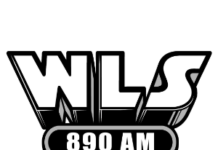
(By Gary Begin) The problem: good radio stations are being forced to cut their rates to stay competitive due to the influx of cheap advertisements driven by desperate radio groups. The consequence is excessively long stopsets, sometimes as long as 12 minutes every hour, which come across as even lengthier due to the inclusion of many short spots.
It’s a misconception peddled by PPM “experts” that limiting these stop sets to twice an hour in strategic quarter-hour locations will mitigate the damage and increase listenership. In reality, ratings show that this strategy falls flat. Although stations might technically earn credit for extra quarter hours by strategically dumping commercials, it may come at the cost of alienating listeners rather than cultivating a passionate fanbase.
Growing commercial clutter is a serious problem.
It’s irrelevant how locally oriented you are, how liked your personalities are, or how excellent your music is if you have commercial clutter. The less-is-more approach is optimal given the modern radio listener’s remarkably short attention spans. Too many commercials are one of the big reasons streaming services took off. Radio has forgotten that it’s part of the entertainment industry. You have to offer the act that provides entertainment.
Here are six truths I’ve found about reducing commercial clutter:
- Humorous commercials are a tune-in when most others invite immediate tune-out. Create a hook to stay with the listener and create a real benefit to the advertiser.
- When spots are entertaining, brief, and to the point, your audiences learn they don’t have to tune-out.
- More stations are having success with scheduling no more than 10 minutes of ads per hour, with five in the first half hour and the remainder in the second. This method increases TSL and makes each advertiser’s message more valuable to the audience.
- If you can’t swing ten minutes or less, more frequent – but shorter – stop sets can be an advantage for today’s attention-deficit audiences.
- Many stations have reaped tremendous client retention rates from reducing commercial clutter while charging more per unit. When spots actually get heard by the audience, that on-air product becomes a premium!
- DO NOT start a stop set with those four killer words: “We’ll be right back.” Never give your audience a reason to leave. They may never come back.
Remember, commercials can still be an attraction, like TV spots during the Super Bowl. Radio stations that have understood this are leading in ratings and billing in their markets. Strategies that improve tune-out by 30% and increase billing by 15% involve making advertisers’ commercials more effective. Remember the old saying, “Quality over quantity.”
Gary Begin is Founder/President of Sound Advantage Media, a radio/podcasting
consulting firm. He possesses over 40 years professional radio broadcasting &
voice over experience. Contact Gary at [email protected] and
731-437-0536. Read Gary’s Radio Ink archives here.






Approaching better ways to spread your commercial load is an important consideration by Gary. Consider running your spot breaks at :15 past the hour rather than :20 past. You should be running loads of music while other stations are running spots at the same time. ‘Make up’s’ can easily be run near the top of the hour
“It’s a misconception peddled by PPM “experts””
But then you come up with two breaks of five minutes each. It wasn’t really a misconception, then. So all you’re doing is suggesting fewer spots in the two breaks an hour. But you don’t explain how to replace the lost revenue from the other four minutes of spots.
Fewer spots mean less money. There’s no way around that. You can make the spots more entertaining, but that still doesn’t replace the lost revenue. We’d all love to run fewer spots. There is no person I know in radio who believes adding more spots is great radio. But we all want to get paid.
This sounds like trickle down economics to me. Lose money on the front end for the promise of better ratings on the back end. But someone has to find a way to convince advertisers that it’s worth the 20%-30% increase in the rate. That’s the part you leave out.
You don’t lose money, you raise rates for each spot, making them valuable while increasing ROI.
I mentioned this in part 5 of 6 in Reducing Commercial Clutter. Read sharper before you criticize.
You have to base that rate increase on something. If the station doesn’t in fact show a 20% increase in ratings, it’s hard to justify a corresponding increase in rates.
We’re in a very difficult time for advertising. Every ad-supported media platform has been forced to cut staff, including Spotify and Sirius. It’s not a good time to spring a rate increase on advertisers.
Gary actually shows 2 ways to win and one is the bottom line. A good commercial works for the client and for return business and the station to keep itself in the entertainment business in a stop set.
Good advice on how to declutter and reduce stopsets. That strategy works very well if you are up against an entrenched competitor with long 2x/hour stopsets, especially if you can keep your own spot load low enough to make a big deal about how much more music you play in an hour. (The idea is to take the P2s and P3s and get them thinking about how much shorter your stops are whenever they hear the other station get to the fifth spot in theirs … that has the potential to make those listeners P1s … for you.)
Mr. Begin is well-equipped to advise station operators on the way to shape programming to achieve success.